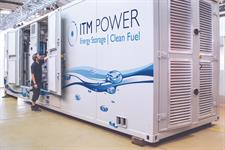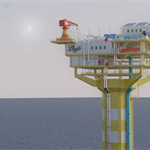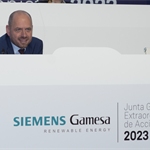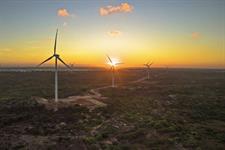Ørsted and Siemens Gamesa pick UK site for EU-funded green hydrogen pilot
Energy Disrupter
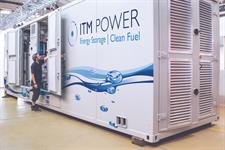
A consortium including Ørsted and Siemens Gamesa Renewable Energy aims to develop a megawat-scale electrolyser suitable for offshore conditions in a shoreside pilot trial in north-east England.
Through the EU-funded Oyster project, the partners plan to explore the feasibility and potential of combining an offshore wind turbine directly with an electrolyser and transporting renewable hydrogen to shore.
They will develop the project at Ørsted’s operations and maintenance hub in Grimsby – outside the EU in the UK – close to Siemens Gamesa’s offshore wind blade factory in Hull.
Ørsted is also working with Oyster project partners Element Energy and ITM Power, as well as oil and gas company Phillips 66 on the Gigastack project in the region, through which they aim to cut the costs of producing green hydrogen.
The partners have not disclosed what the capacity of the electrolysis component or the turbine model will be.
They expect the pilot project will run until 2024.
The €5 million project is entirely funded by the European Commission.
The Oyster consortium members explained that offshore hydrogen production needs compact electrolysis systems that can withstand harsh offshore conditions and have minimal maintenance requirements, while still meeting cost and hydrogen production targets.
They aim to produce an electrolyser system that will be compact enough to fit inside a single turbine and will follow the turbine’s production profile. It should also combine the desalination and water treatment process to make it possible to use seawater as a feedstock for electrolysis, the partners explained.
ITM Power will be responsible for developing the electrolysis system. Ørsted will lead analysis of offshore deployment and the feasibility study of future offshore electrolyser deployments. It will also help ITM Power make the electrolyser suitable for offshore conditions.
Meanwhile, Siemens Gamesa and Element Energy will provide technical and project management expertise.
Siemens Gamesa is also working with parent company Siemens Energy to integrate an electrolyser unit within a large-scale offshore wind turbine, and recently began onshore trials.
Duncan Clark, head of UK Region for Ørsted, said: “The combination of offshore wind and renewable hydrogen production holds game-changing potential to decarbonise otherwise hard to abate sectors.
“We are exploring offshore hydrogen production as a future, supplemental way of getting large amounts of renewable energy, generated from plentiful offshore wind, to where it is needed. Just as with scaling-up offshore wind, early lessons from projects like this can then be deployed across the region and around the world.”
The EU aims to have renewable energy feeding 40GW electrolysis capacity by 2030 under its Hydrogen Strategy, which was unveiled last summer.

